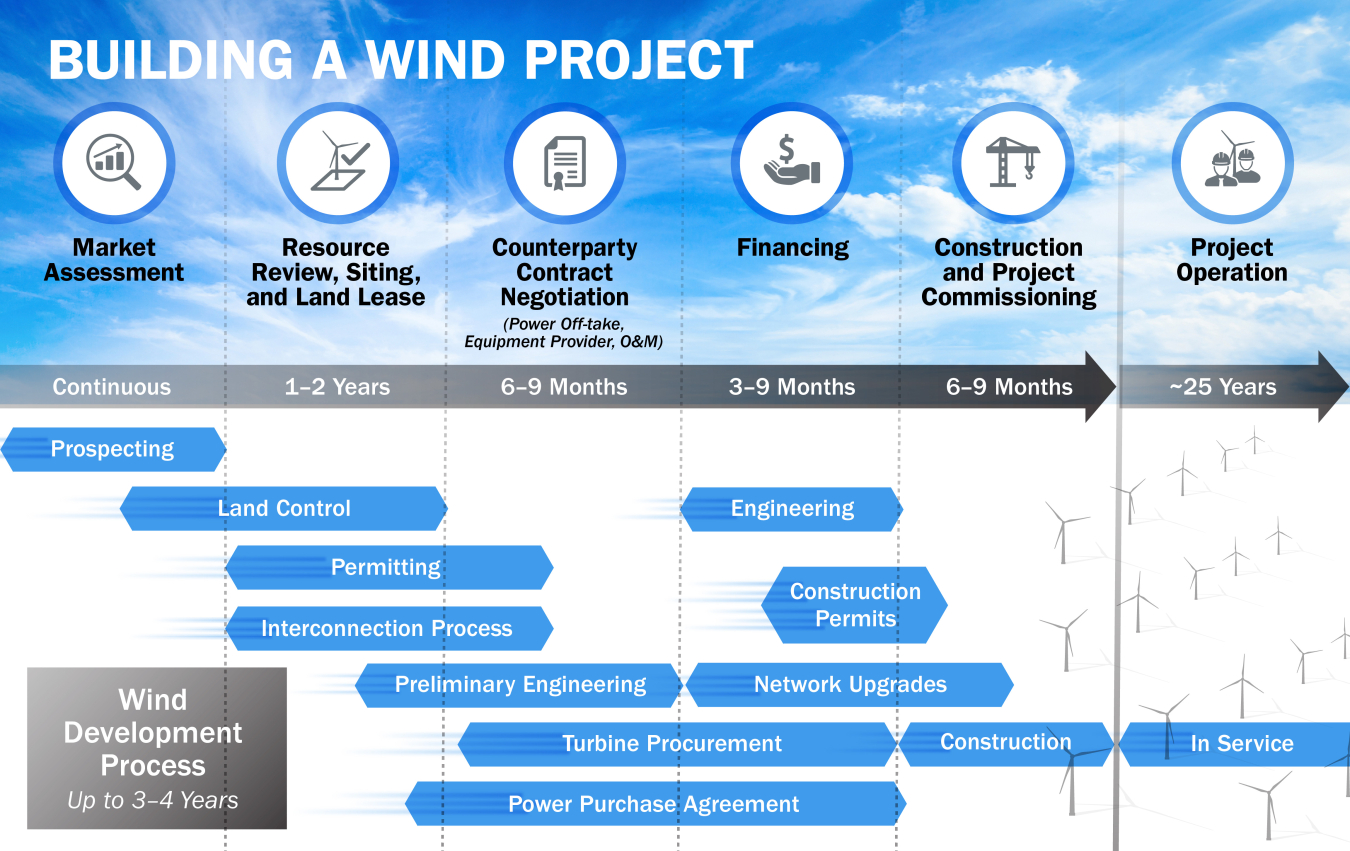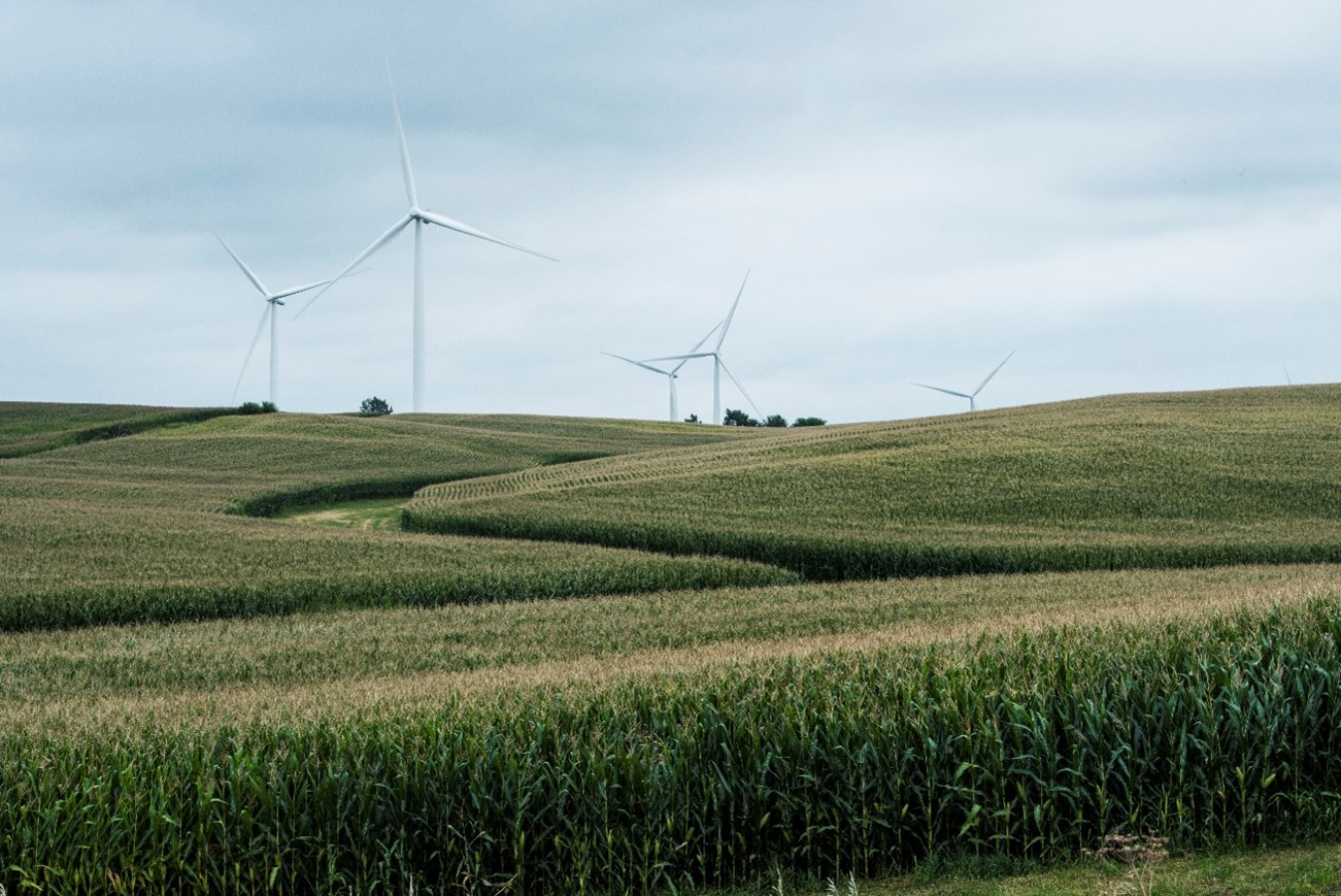Local jobs. Increased tax revenues. Income for landowners. Clean, homegrown energy.
These are just a few of the many benefits wind energy projects offer the communities in which they are located.
But when it comes to deciding if a wind project is right for them, communities can find it challenging to weigh potential benefits against the time and cost it takes to approve, build, operate, and maintain the project.
To help local decision makers determine whether a wind project is right for their community, the U.S. Department of Energy’s (DOE’s) WINDExchange initiative released two information resources: a report titled “Land-Based Wind Energy Siting” and a web-based Land-Based Economic Development Guide.
Created by experts at DOE’s National Renewable Energy Laboratory, these comprehensive, easy-to-read resources provide useful information to support a greater understanding of the siting considerations and economic opportunities associated with wind energy. These resources highlight the elements communities should consider when pursuing a wind energy project—from conception and construction of the project site to how the community coexists with the wind project once it’s operating.

Overcoming Siting-Related Concerns
The “Land-Based Wind Energy Siting” report focuses on land-based wind energy from the community perspective. It examines how communities address a host of issues through ordinances—from limitations on sound, to how safety lighting required by the Federal Aviation Administration might impact the nighttime skies, and more. This information can help communities define parameters that ensure their wind energy developments are tailored to address specific community needs and concerns.
For example, the construction of a new wind power plant might raise concerns among nearby landowners who worry that the project will impact their property values. The guide summarizes research that shows the minimal impact wind energy development has had on nearby property values.
Community members may express concern that a proposed wind energy project will impact farming, ranching, or recreational activities. “Land-Based Wind Energy Siting” provides helpful context to ease their concerns. Thanks to regulations that require adequate spacing between wind turbines and between turbines and landscape features, 95%–99% of the land can still be used for other purposes.

Understanding Economic Benefits
The Land-Based Economic Development Guide—a web-based tool—helps community decision makers and others better understand the economic benefits of a proposed wind energy project.
This online resource explores how wind energy projects can be important sources of revenue for the communities that host them. For example, workers at wind energy projects tend to spend their earnings in the communities where they live and work. Construction workers spend money at restaurants, grocery stores, and retailers, which can increase community sales tax revenue. Project developers rent housing for workers and buy construction materials at hardware stores. Once the project is up and running, operation and maintenance workers live in nearby communities and contribute to the local tax base.
The guide covers five main topics that are essential to understanding the potential economic benefits of wind energy:
- Wind energy basics: Key information about wind energy technology and trends
- Local government revenues: Taxes and revenue structures
- Community development: How revenues are used within the community
- Landowner and development considerations: Lease payments and rural impacts
- Business and the local workforce: How to prepare for construction and operations.
“Land-Based Wind Energy Siting” and the Land-Based Economic Development Guide were funded by DOE’s Wind Energy Technologies Office.
Explore the guides and the growing collection of WINDExchange resources.
